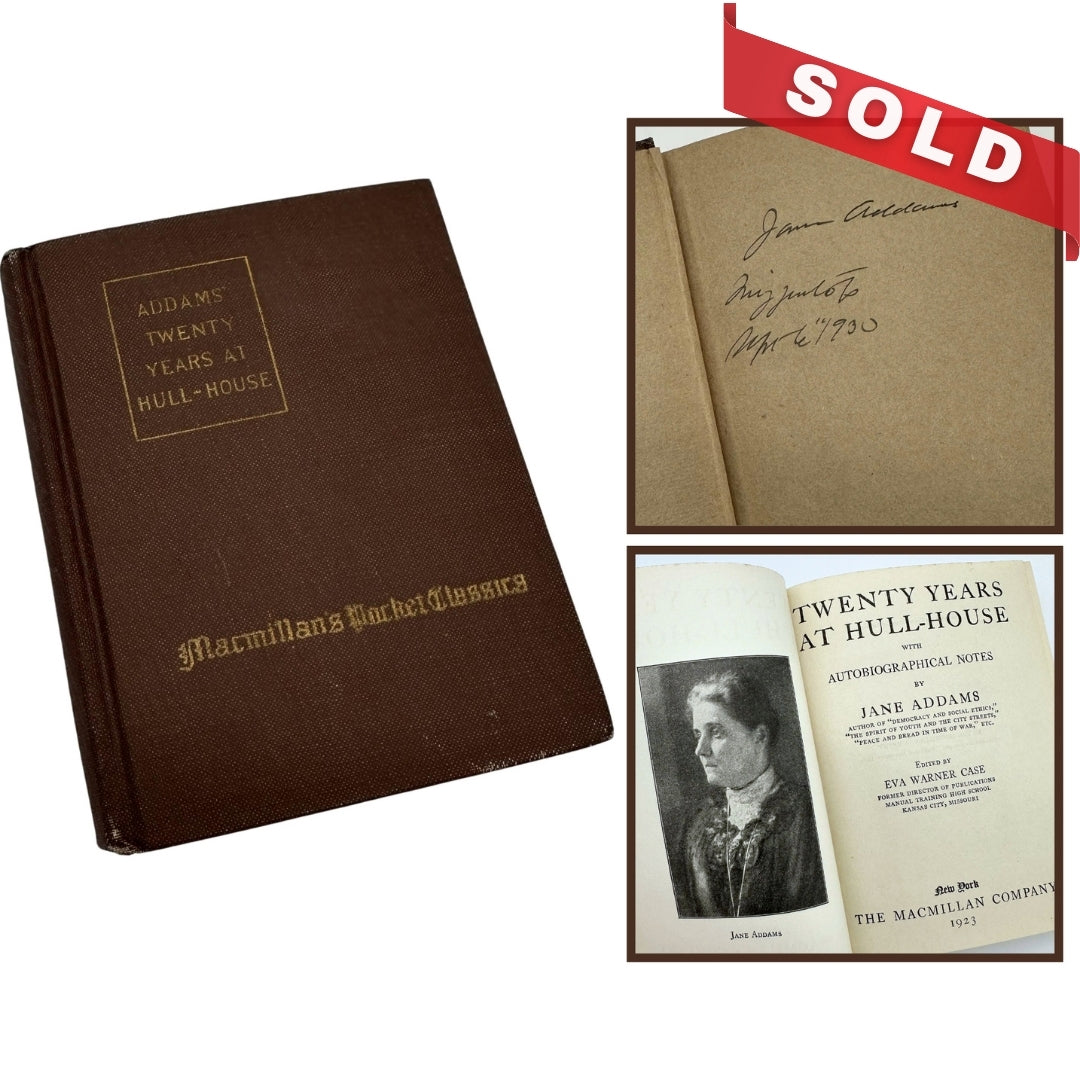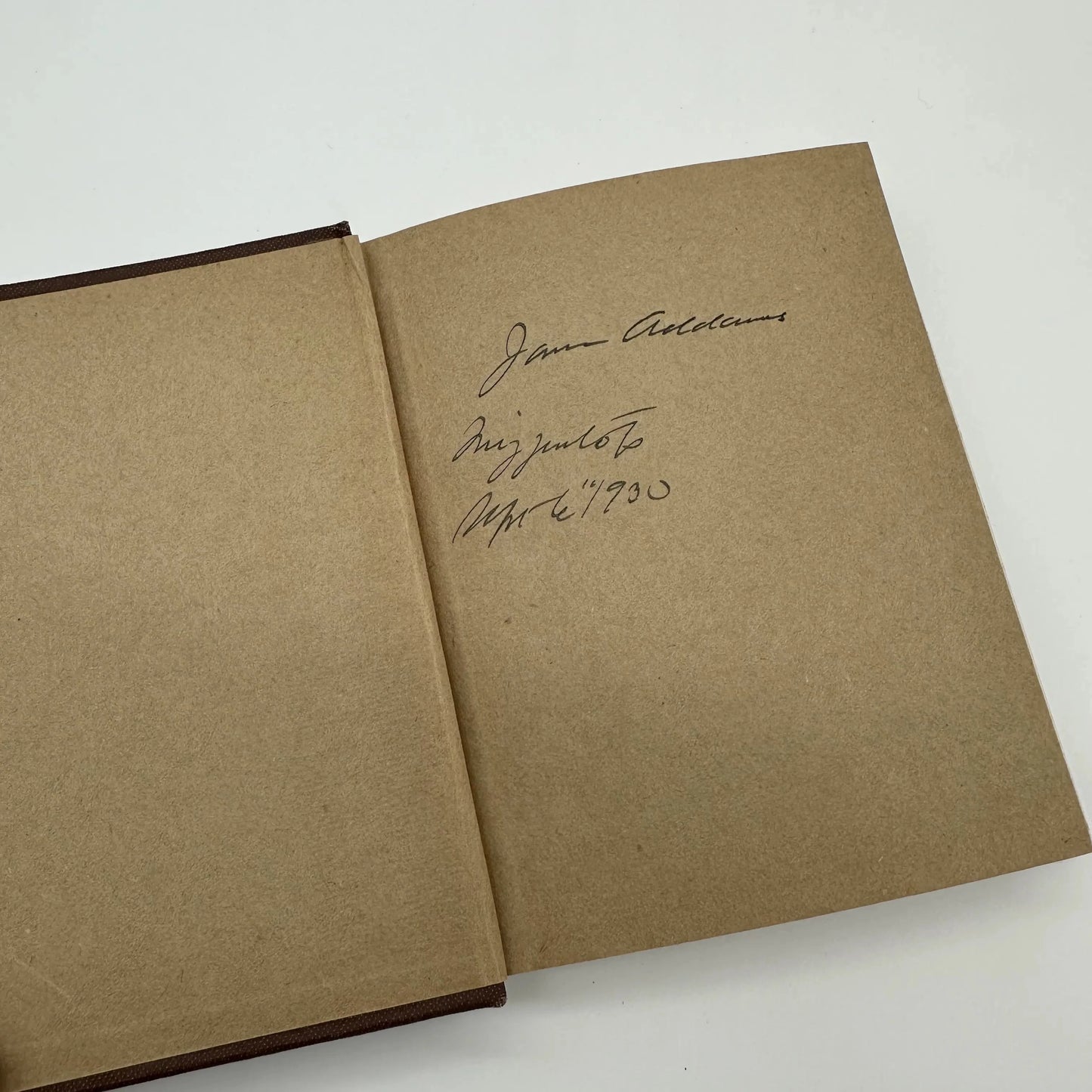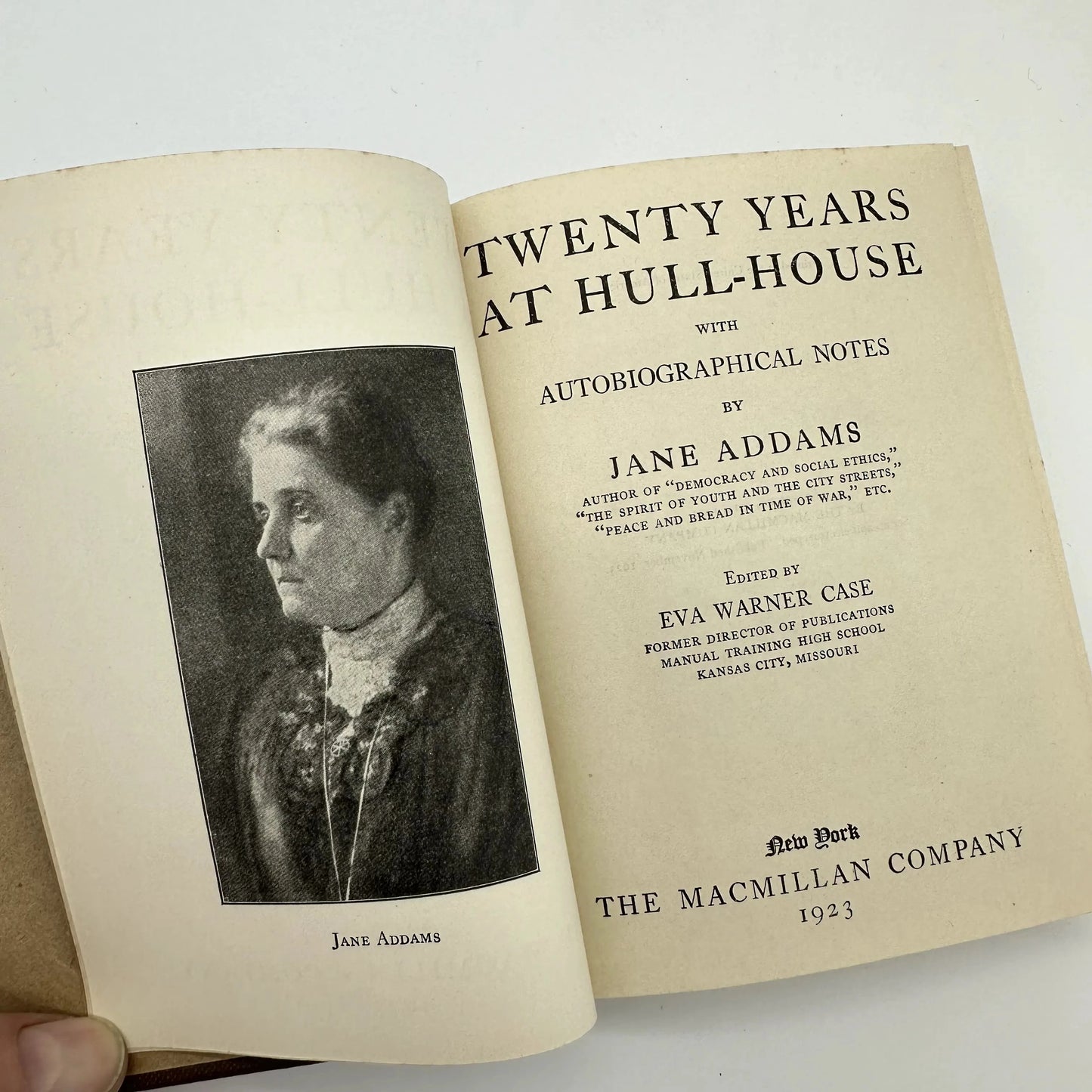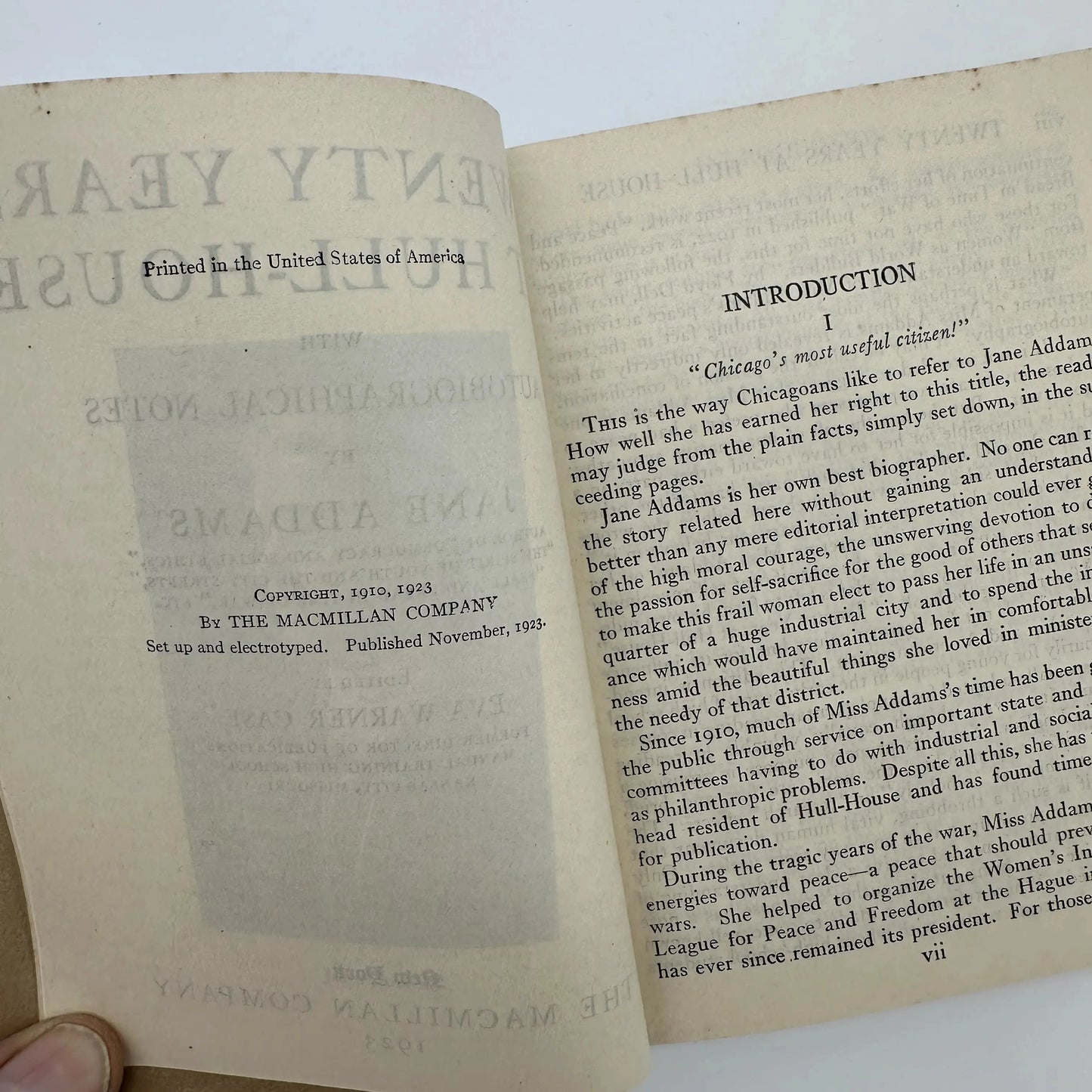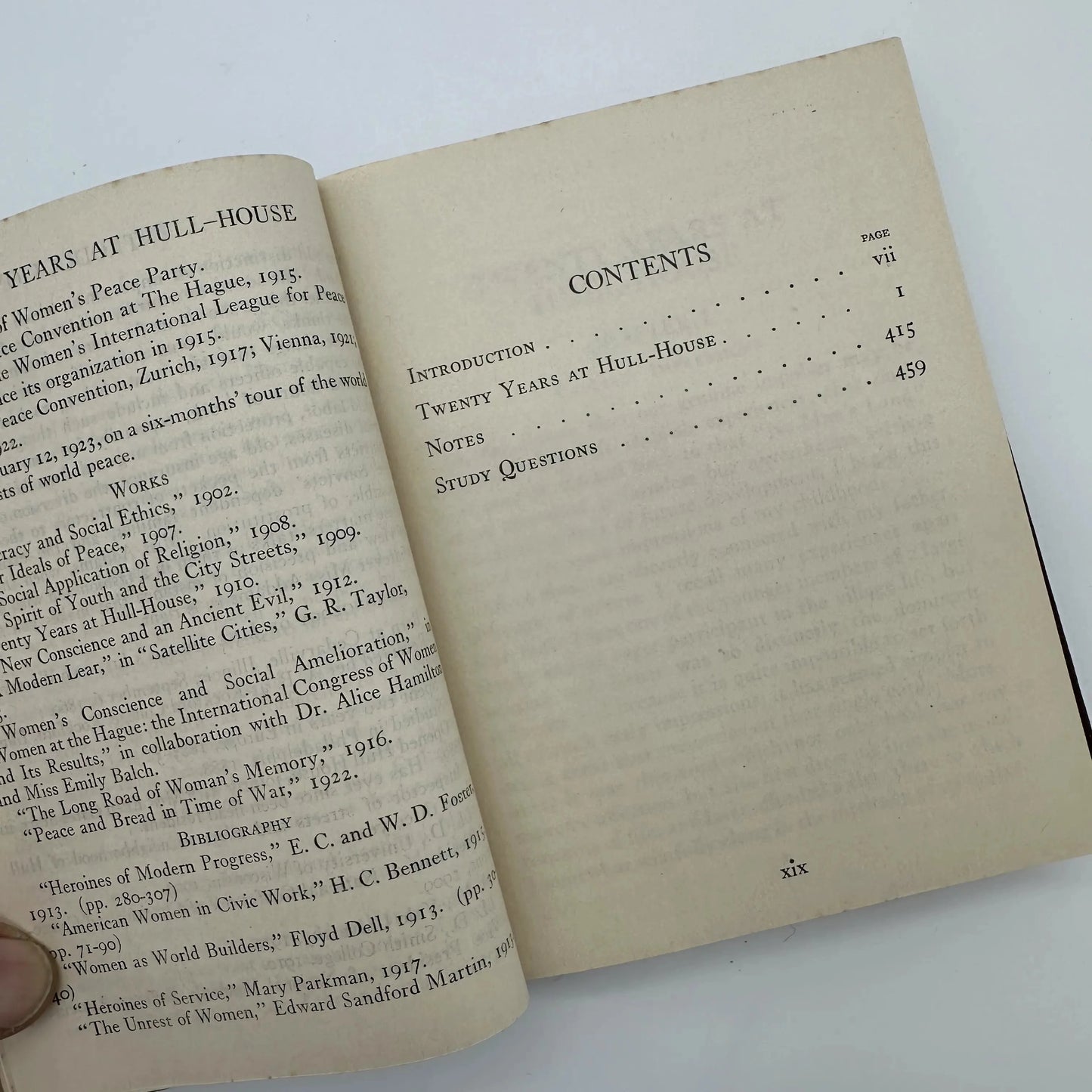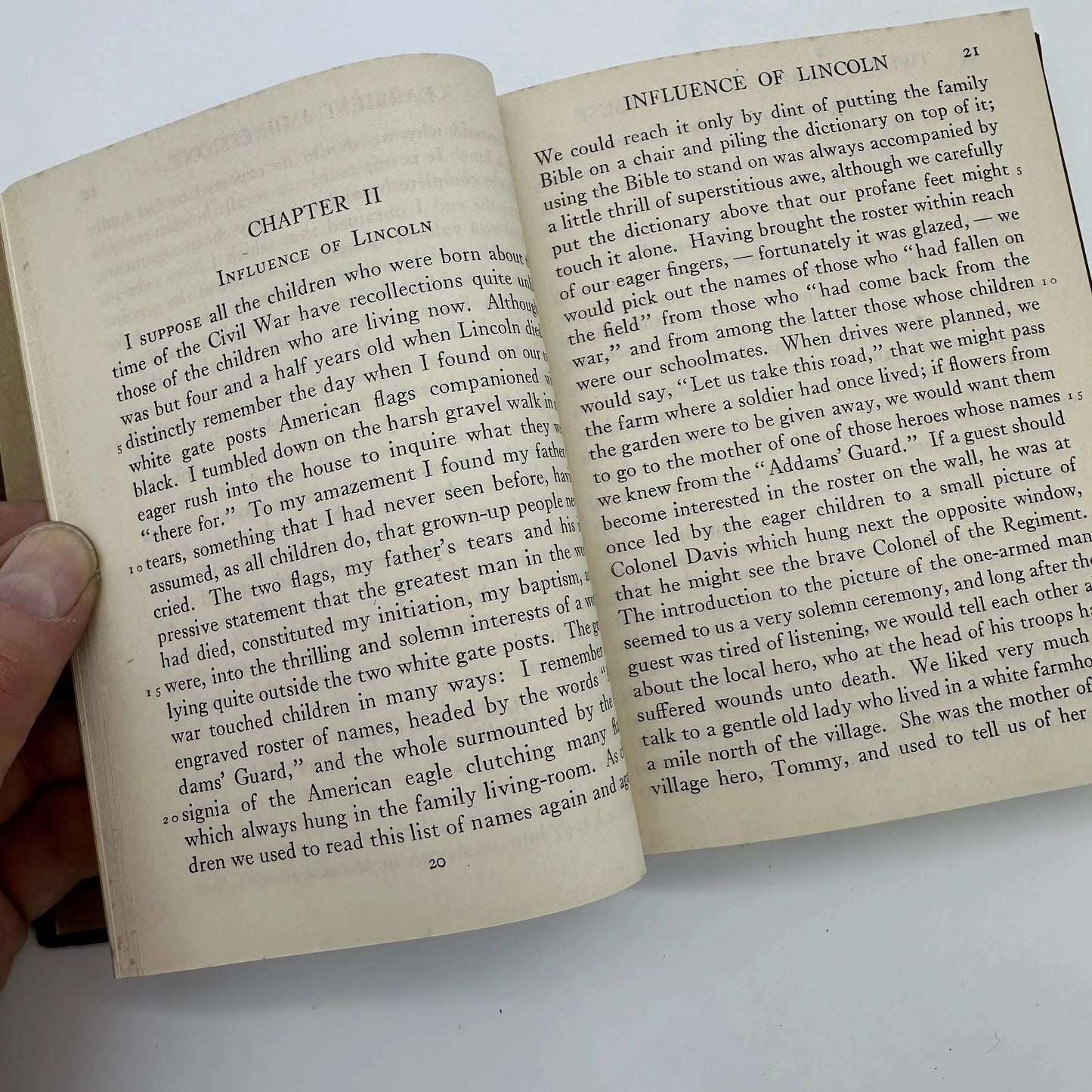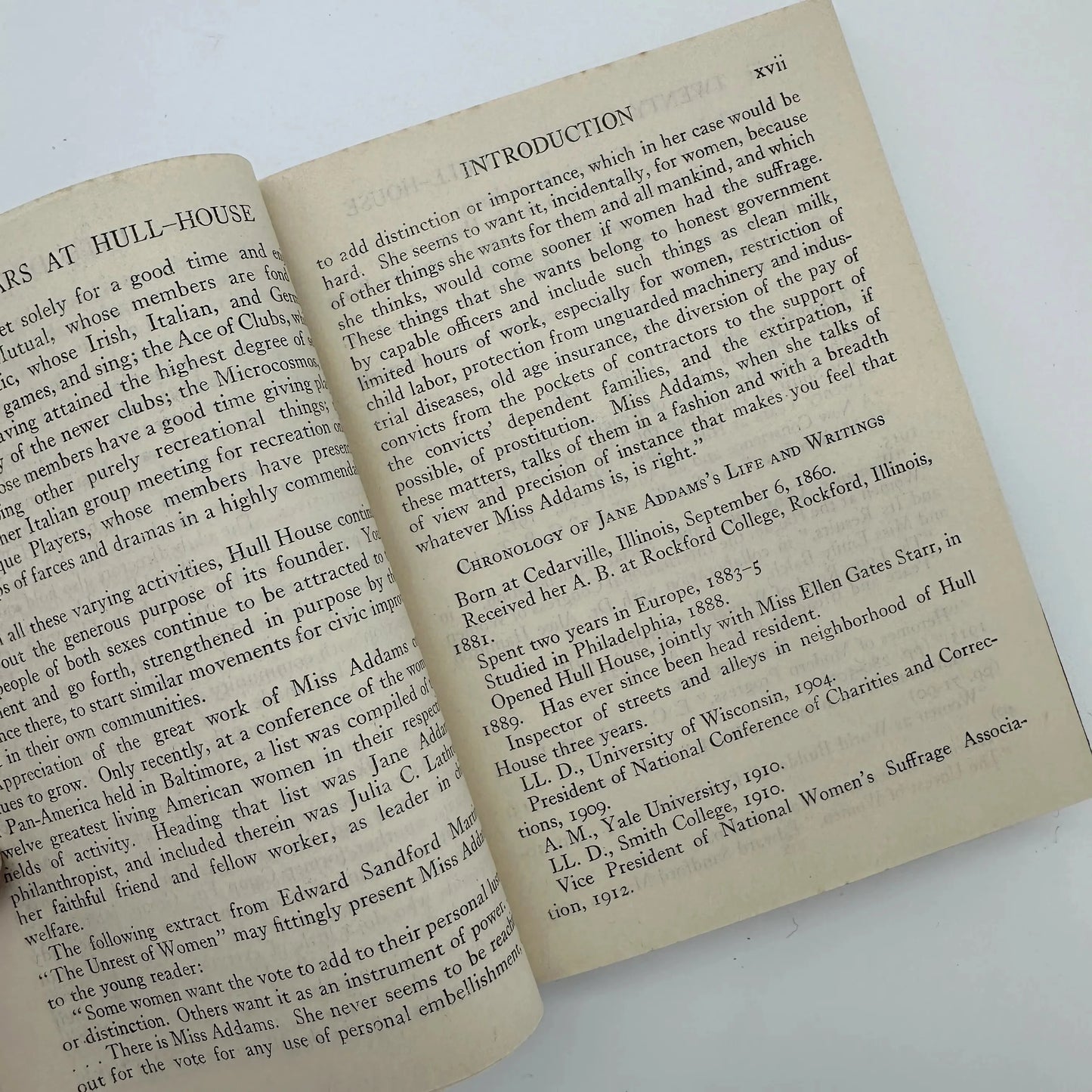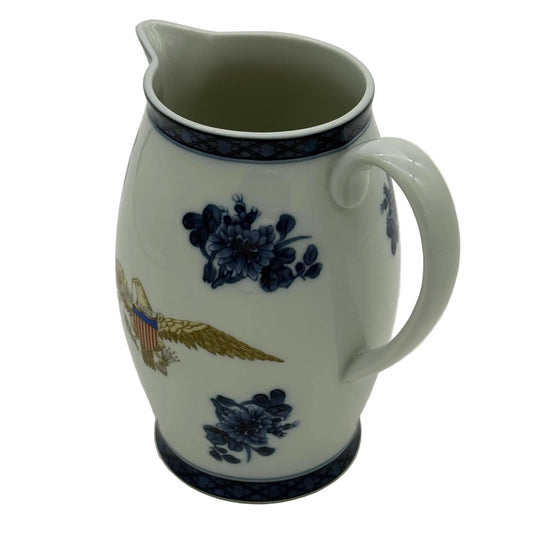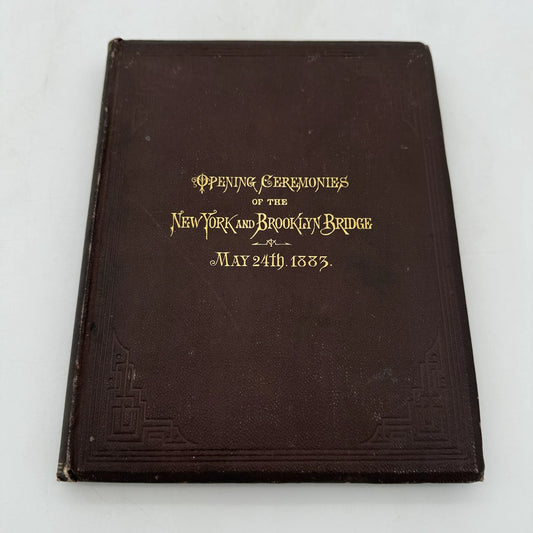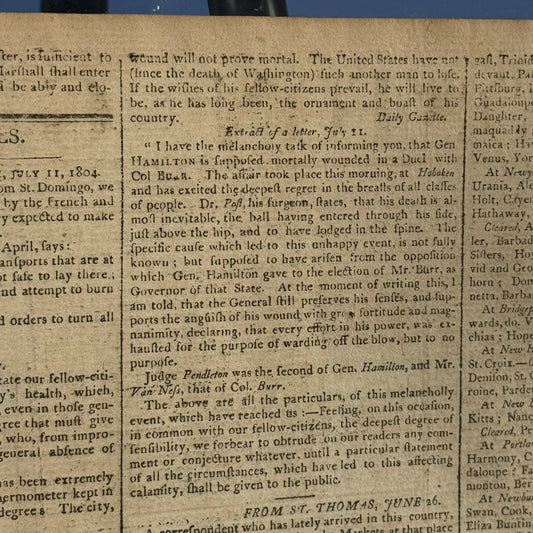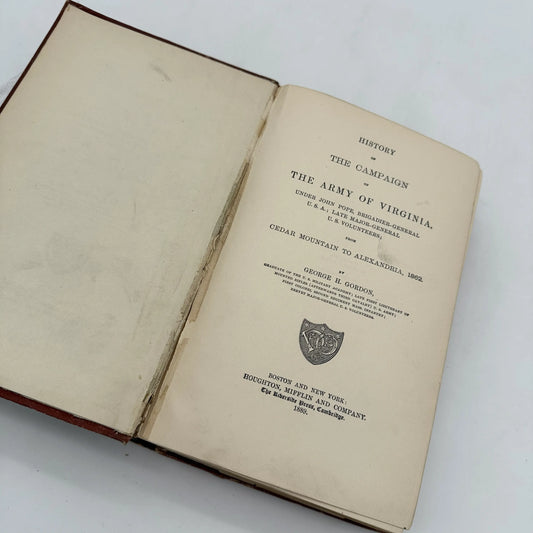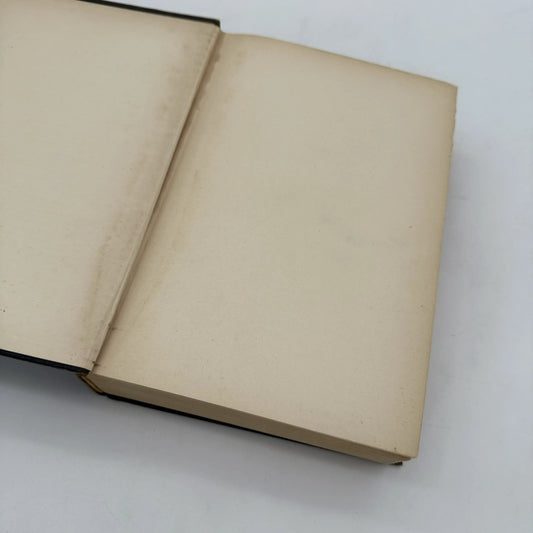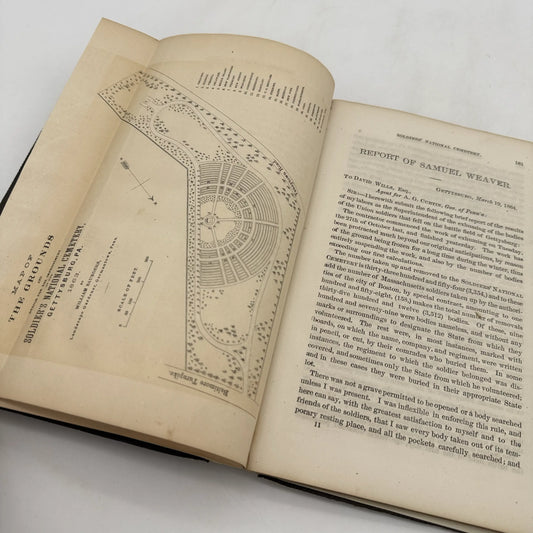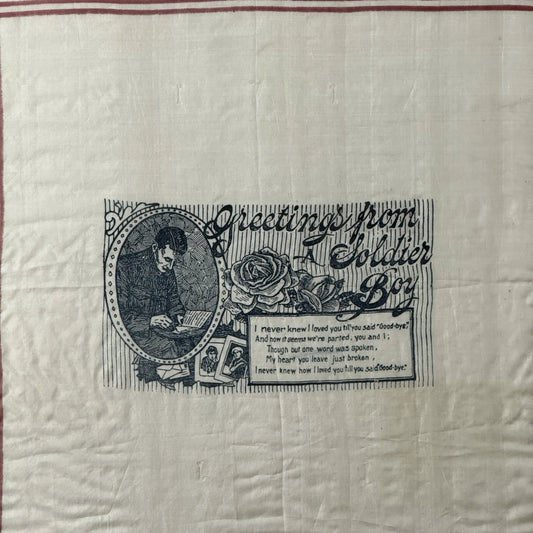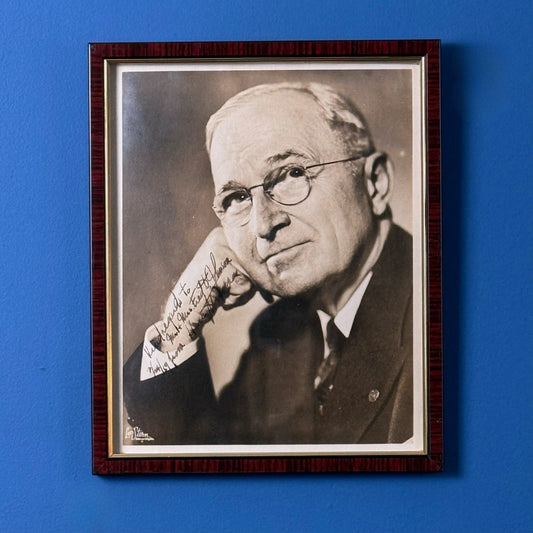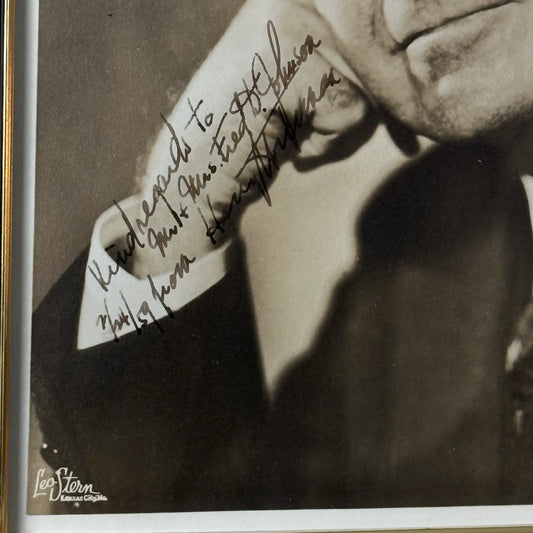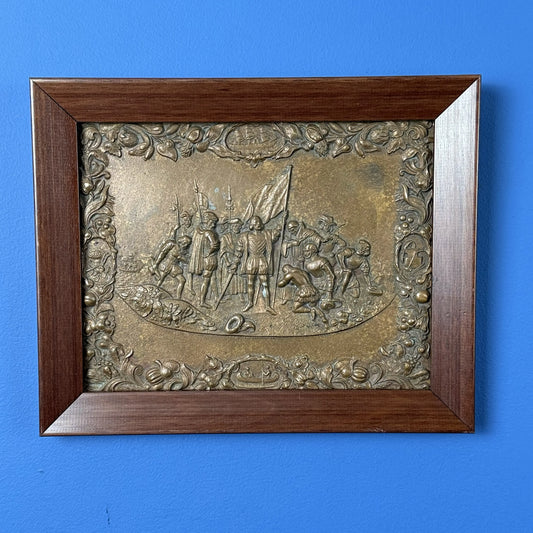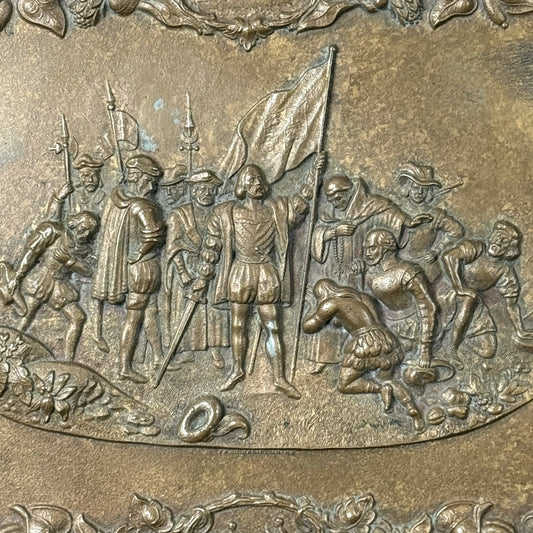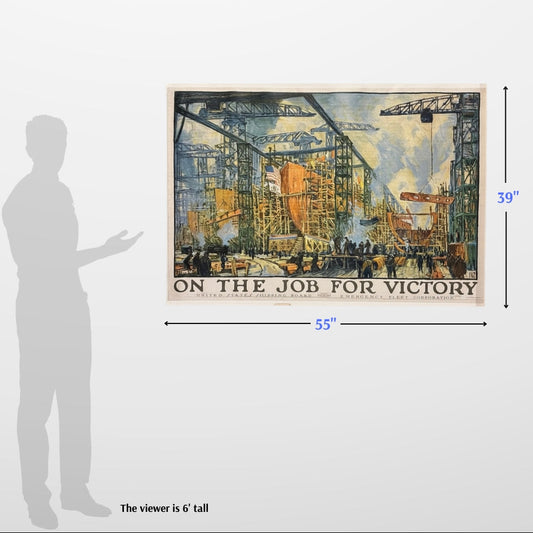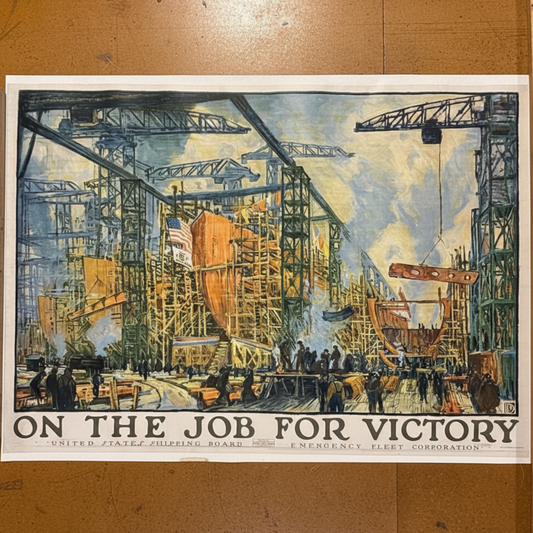"Twenty Years at Hull-House” signed by the author, Jane Addams, 1923
"Twenty Years at Hull-House” signed by the author, Jane Addams, 1923
$495.00
Couldn't load pickup availability
Updated November 28: This has been sold.
Published in New York by The Macmillan Company in 1923. Signed by it's author, Jane Addams, and inscribed to a former owner on the front free endpaper.
In very good condition.
From the Macmillan's Pocket Classics series, the book is 4 ½" x 6".
About the book:
In 1889, while many Americans were disdainful of newly arrived immigrants, Jane Addams established Hull-House as a refuge for Chicago's poor. The settlement house provided an unprecedented variety of social services.
In this inspiring autobiography, Addams chronicles the institution's early years and discusses the ever-relevant philosophy of social justice that served as its foundation.
Addams, who received the Nobel Peace Prize in 1931 for her philanthropic work, explains her motives for creating the institution and outlines its main activities. She also discusses many of her beliefs, including the need for commitment of federal agencies to services for immigrants, as well as socialized education.
Filled with observations on everyday life, accounts of practical action, and prescriptions for public policy, Twenty Years at Hull-House remains a rich source of provocative social theory. This edition of Addams's classic of American intellectual and social history features more than 50 illustrations.
About the author:
Jane Addams (born Laura Jane Addams, September 6, 1860-May 21, 1935) won worldwide recognition in the first third of the twentieth century as a pioneer social worker in America, as a feminist, and as an internationalist.
She was born in Cedarville, Illinois, the eighth of nine children. Her father was a prosperous miller and local political leader who served for sixteen years as a state senator and fought as an officer in the Civil War; he was a friend of Abraham Lincoln whose letters to him began «My Dear Double D-‘ed Addams». Because of a congenital spinal defect, Jane was not physically vigorous when young nor truly robust even later in life, but her spinal difficulty was remedied by surgery.
In 1881 Jane Addams was graduated from the Rockford Female Seminary, the valedictorian of a class of seventeen, but was granted the bachelor’s degree only after the school became accredited the next year as Rockford College for Women. In the course of the next six years she began the study of medicine but left it because of poor health, was hospitalized intermittently, traveled and studied in Europe for twenty-one months, and then spent almost two years in reading and writing and in considering what her future objectives should be. At the age of twenty-seven, during a second tour to Europe with her friend Ellen G. Starr, she visited a settlement house, Toynbee Hall, in London’s East End. This visit helped to finalize the idea then current in her mind, that of opening a similar house in an underprivileged area of Chicago. In 1889 she and Miss Starr leased a large home built by Charles Hull at the corner of Halsted and Polk Streets. The two friends moved in, their purpose, as expressed later, being «to provide a center for a higher civic and social life; to institute and maintain educational and philanthropic enterprises and to investigate and improve the conditions in the industrial districts of Chicago.
Miss Addams and Miss Starr made speeches about the needs of the neighborhood, raised money, convinced young women of well-to-do families to help, took care of children, nursed the sick, listened to outpourings from troubled people. By its second year of existence, Hull-House was host to two thousand people every week. There were kindergarten classes in the morning, club meetings for older children in the afternoon, and for adults in the evening more clubs or courses in what became virtually a night school. The first facility added to Hull-House was an art gallery, the second a public kitchen; then came a coffee house, a gymnasium, a swimming pool, a cooperative boarding club for girls, a book bindery, an art studio, a music school, a drama group, a circulating library, an employment bureau, a labor museum.
As her reputation grew, Miss Addams was drawn into larger fields of civic responsibility. In 1905 she was appointed to Chicago’s Board of Education and subsequently made chairman of the School Management Committee; in 1908 she participated in the founding of the Chicago School of Civics and Philanthropy and in the next year became the first woman president of the National Conference of Charities and Corrections. In her own area of Chicago she led investigations on midwifery, narcotics consumption, milk supplies, and sanitary conditions, even going so far as to accept the official post of garbage inspector of the Nineteenth Ward, at an annual salary of a thousand dollars. In 1910 she received the first honorary degree ever awarded to a woman by Yale University.
Jane Addams was an ardent feminist by philosophy. In those days before women’s suffrage she believed that women should make their voices heard in legislation and therefore should have the right to vote, but more comprehensively, she thought that women should generate aspirations and search out opportunities to realize them.
For her own aspiration to rid the world of war, Jane Addams created opportunities or seized those offered to her to advance the cause. In 1906 she gave a course of lectures at the University of Wisconsin summer session which she published the next year as a book, Newer Ideals of Peace. She spoke for peace in 1913 at a ceremony commemorating the building of the Peace Palace at The Hague and in the next two years, as a lecturer sponsored by the Carnegie Foundation, spoke against America’s entry into the First World War. In January, 1915, she accepted the chairmanship of the Women’s Peace Party, an American organization, and four months later the presidency of the International Congress of Women convened at The Hague largely upon the initiative of Dr. Aletta Jacobs, a Dutch suffragist leader of many and varied talents. When this congress later founded the organization called the Women’s International League for Peace and Freedom, Jane Addams served as president until 1929, as presiding officer of its six international conferences in those years, and as honorary president for the remainder of her life.
Publicly opposed to America’s entry into the war, Miss Addams was attacked in the press and expelled from the Daughters of the American Revolution, but she found an outlet for her humanitarian impulses as an assistant to Herbert Hoover in providing relief supplies of food to the women and children of the enemy nations, the story of which she told in her book Peace and Bread in Time of War (1922).
After sustaining a heart attack in 1926, Miss Addams never fully regained her health. Indeed, she was being admitted to a Baltimore hospital on the very day, December 10, 1931, that the Nobel Peace Prize was being awarded to her in Oslo. She died in 1935 three days after an operation revealed unsuspected cancer. The funeral service was held in the courtyard of Hull-House.
Source: NobelPrize.org
Made by America
Made by America
Almost all of the new products we offer are designed by us and made in America and most of our Rare Finds were made in America.
Our original designs are based on our nation’s history and our love of American history. Read more about other things we've created, including The History List, History Camp, and The Pursuit of History, in addition to The History List Store.
Every product that is made in America states that in the product description and includes the "Made in U.S.A." graphic.
